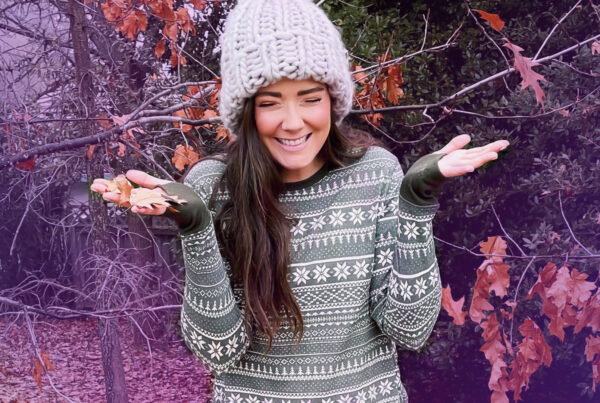When brands set out to collaborate with creators, they often take a top-down approach, providing brand and product information, creative guidance, and goals. At IZEA, we take a different approach. With 3.9 million influencer activations to our name, we have experience crafting strategies to ensure we’re capitalizing on your end objective.
An integral part of building your campaign strategy is understanding the type of social media user you target. At IZEA, we’ve split the way consumers engage with social media into three tiers: the Scrollers, the Seekers, and the Followers. Below, we detail the trademark behaviors of each group and explain common goals, KPIs, and best practices for reaching them.
The Scroller
Definition: Many users scroll continuously for long periods. Often multitasking or mindless, some experts have nicknamed this habit “Zombie Scrolling,” with estimates of consumers scrolling through 300 feet of content daily — roughly the length of the Statue of Liberty.
TikTok’s FYP and IG Reels are specifically designed for this behavior with people spending hours watching video after video. As a brand, it’s essential to reach your consumers with entertainment that leads to discovery. A coveted algorithm dictates which videos appear in feeds, so it’s not always easy to get discovered, but with the right goals and best practices in mind, you can increase your chances.
Brand objective: Edutain (educate and entertain) your audience
KPI to measure: Views
Best practices to reach Scrollers
- Benchmark trends: Monitor social channels to spot trends your brand can leverage. If there’s a natural fit, pursue it, but remember not to force a connection.
- Quick turnarounds: Does your team have the capacity to spot trends and act on them? You need a nimble team that can act quickly. Be sure to allocate time in your marketing budget for trend spotting and activation.
- Consider well-known influencers: If you work with mega-influencers, you increase your reach and chances of landing in someone’s “discovery feed.”
You’ll need a larger budget to work with more popular creators, but the brand exposure, engagement, and sales could net a solid ROI.
The Seeker
Definition: As the name suggests, Seekers are looking for something specific. A growing number of consumers turn to social channels to conduct product recon: “What can I do with what’s in my fridge,” “organizational hack,” or “healthy recipes.” This phenomenon is especially popular with Gen Z. Research shows that almost half of Gen Z people prefer to search on social channels, specifically YouTube, Instagram, and TikTok, rather than Google.
Brand objective: Be authentic.
KPIs to measure: Shares and engagement
Best practices to reach Seekers
- Blend in: Authentic content blends in, so ask influencers to produce low-fi videos that are engaging and not overproduced.
- Integrate search terms: Consider how your customers will search for your product. What descriptors will they use? Include these search words in your post and in metadata.
- Provide clear instructions: How-to content, like tutorials and step-by-step instructions, is effective for this crowd. Whether your marketing teams create the content or you ask an influencer to help, make sure you demonstrate the product clearly. Organize the content as much as possible, too. YouTube, for example, uses chapters to help consumers consume your content easily.
- Support organic content with paid ads: To ensure you reach Seekers, it’s wise for brands to rely on a mix of content, including their social posts, influencer-generated content, and paid ads. By combining these three marketing methods, you can maximize your reach and help Seekers find the info they need.
The Follower
Definition: Social media is founded on followers, or those who seek information and entertainment from others. Influencers reach 83% of consumers between the age 18 to 60, according to our Trust in Influencer Marketing report, with most consumers following between one to 20 influencers.
Brand objective: Sales
KPIs to measure: Clicks, conversions
Best practices to reach Followers
Here’s how to reach these types of social media users:
Use brand ambassadors
Followers consider recommendations from influencers the same as they would a suggestion from a friend. So, rather than rely on influencers for a campaign or two, consider turning influencers into regular contributors to your brand as an ambassador.
Tap influencers to signal trends
Consumers follow creators to keep tabs on trends. They count on influencers to keep them up-to-date, so rely on influencers to position your product as trendy.
Post consistent, relative content
Followers want to see a steady flow of content from your brand, so use scheduling features to create evergreen and seasonal content and sprinkle in more timely posts as needed.
At different points in time, how we engage on social embodies all three of these personas. As you plot your next influencer campaign, consider briefing creator content by the type of social media user you’d like to reach and the KPIs you want to elevate. Download our white paper for a condensed POV on the types of social engagers and how to strategize your creative and media strategy to best align with your campaign KPIs.
Influencers:
Looking to partner with industry-leading brands? Create your free profile today.
Marketers:
The world’s biggest brands trust IZEA’s influencer marketing software and full-service solutions. Find out which solution is right for you.
IZEA MANAGED SERVICES
Strategy and execution from the company that launched the industry.

IZEA MANAGED SERVICES
Strategy and execution from the company that launched the industry.

IZEA MANAGED SERVICES
Strategy and execution from the company that launched the industry.
IZEA MANAGED SERVICES
Strategy and execution from the company that launched the industry.








